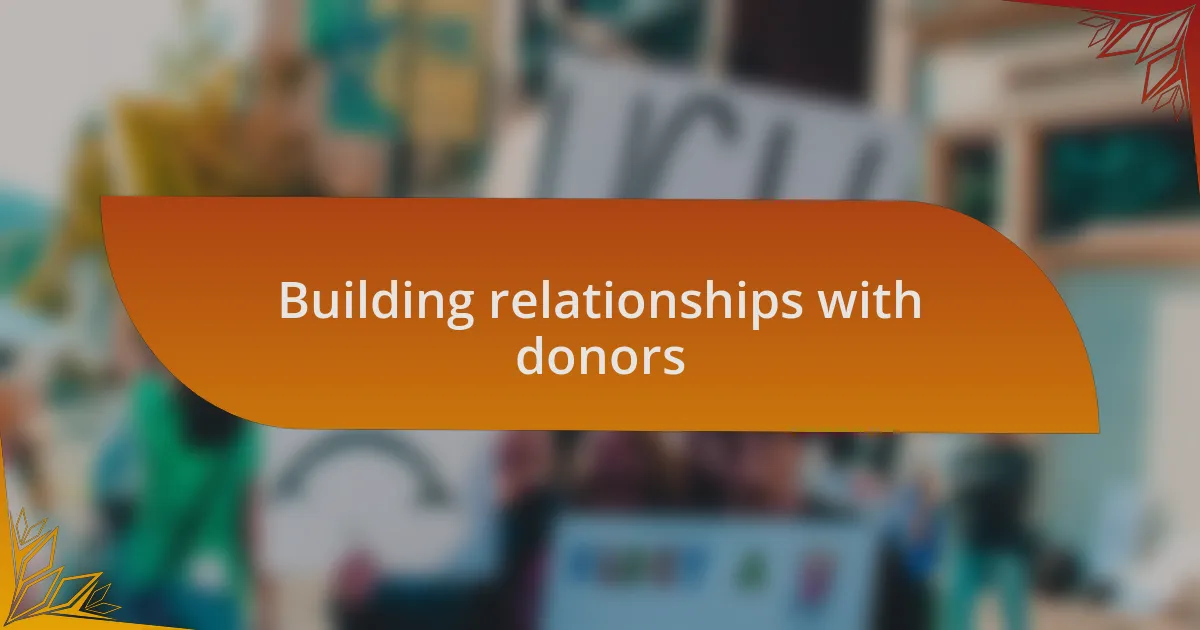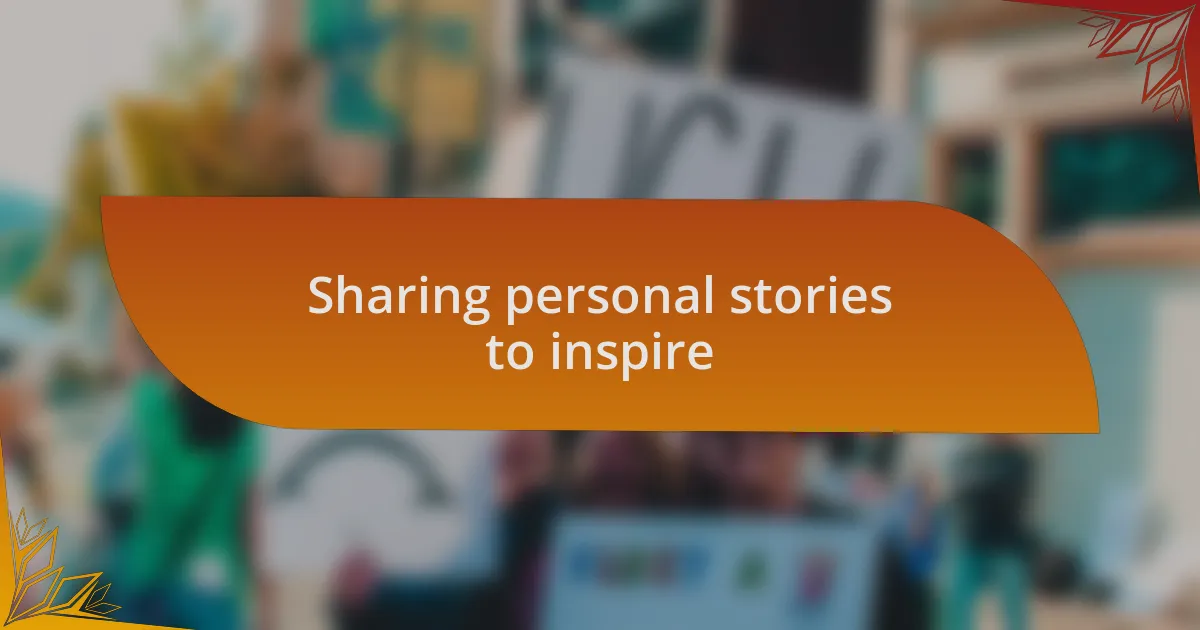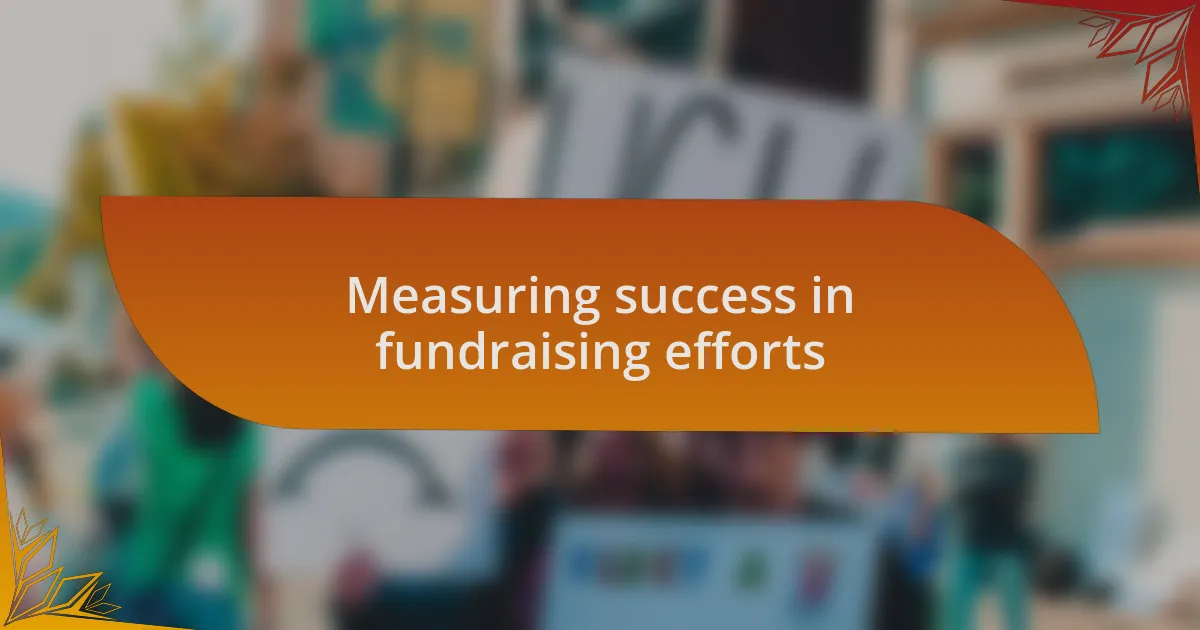Key takeaways:
- Reparations politics involves complex dialogues around historical injustices, emphasizing the need for community understanding and acknowledgment of past impacts on present social realities.
- Fundraising is essential for supporting reparations initiatives, fostering collective action, and building community engagement around shared values and goals.
- Effective fundraising strategies include sharing personal stories, creating compelling narratives, and leveraging social media to reach wider audiences and inspire action.
- Measuring success in fundraising requires evaluating both financial outcomes and their impact on community awareness, engagement, and emotional connections.

Understanding reparations politics
Reparations politics is a deeply complex issue, intertwining history, justice, and social equity. I remember attending a community event where an elder recounted their family’s struggles with systemic oppression. It struck me how often history is overlooked in discussions, prompting the question: how can we reconcile the past without acknowledging its impact on present realities?
Understanding reparations also requires grappling with the differing perspectives surrounding it. Some view it as a moral imperative, while others see it as a divisive conversation. I often find myself pondering, can we genuinely heal as a society if we sidestep the consequences of our actions? The emotional weight of these narratives compels us to reflect on who benefits from neglecting such critical discussions.
Moreover, the dialogue surrounding reparations isn’t just academic; it has real-life implications. I recall a university seminar where students shared their experiences with inequality, illustrating how the lack of reparative measures has fostered resentment and despair. Recognizing the lived experiences behind this issue can lead us to a deeper understanding of why reparations politics matters profoundly today.

Importance of fundraising in reparations
Fundraising plays a crucial role in the reparations movement by providing the necessary resources to amplify voices and promote awareness. I recall joining a fundraising campaign for an organization advocating for reparations, where we raised money to support educational programs. The enthusiasm that emerged in our community as people contributed illustrated the power of collective action, reinforcing my belief that financial support is essential in fostering dialogue and driving meaningful change.
Furthermore, the act of fundraising in the reparations context goes beyond merely collecting money; it builds a community around shared values and goals. I remember speaking with a donor who explained how their contribution wasn’t just about the financial aspect; it was a personal commitment to justice and healing. It made me realize that fundraising serves as a litmus test for engagement—are we willing to invest in our collective future?
In addition, effective fundraising can transform conversations around reparations, shifting them from theoretical discussions to actionable plans. When I attended a strategy meeting funded by previous donations, we were able to brainstorm initiatives and outreach programs that directly addressed unmet needs within marginalized communities. This concrete example helped me see how vital it is to ensure that fundraising efforts align with broader reparative objectives, paving the way for tangible progress.

Strategies for effective fundraising
Building authentic relationships with potential donors is vital for effective fundraising. I remember attending a networking event where I learned that sharing personal stories about the impact of reparations can resonate deeply with supporters. This connection fosters trust and makes individuals feel like active participants in a meaningful cause rather than just anonymous contributors.
Another strategy that I found effective is creating compelling narratives around the initiatives you’re funding. For instance, when I supported a campaign aimed at restoring community gardens in historically marginalized neighborhoods, we used vivid storytelling to convey the emotional journey of the residents. Engaging your audience with relatable narratives can inspire them to invest not just their money but also their passion into your cause. Have you ever thought about how a simple story can transform a stranger into a supporter?
Lastly, leveraging social media as a platform for fundraising cannot be overstated. I witnessed firsthand how a well-crafted post about our local reparations efforts went viral, leading to a surge in donations. Social media enables us to widen our reach and engage with supporters who may not be aware of our work, creating a ripple effect that amplifies our message. It made me realize that sometimes, a single post can initiate dialogues and spark action that fundraising events alone might not achieve.

Engaging the community in fundraising
One effective way to engage the community in fundraising is through collaborative events. I once helped organize a local potluck where community members were encouraged to bring their favorite dishes while sharing stories related to reparations. The atmosphere was electric, filled with laughter and a sense of shared purpose. Have you ever noticed how food has the power to bring people together? By blending community building with fundraising, we not only raised funds but also strengthened our connections, fostering long-term commitment to our cause.
Another approach that has worked wonders for me is creating volunteer opportunities tied directly to fundraising efforts. I recall a time when we organized a community cleanup day, where participants could contribute through service hours. Instead of just asking for money, I invited people to roll up their sleeves for a cause they cared about. This not only increased our donations but also instilled a sense of ownership and pride in our mission. Isn’t it amazing how participation can transform a donation from an abstract concept into a tangible commitment?
Lastly, I believe that fostering open discussions around fundraising can be incredibly impactful. I initiated brainstorming sessions where community members could express their ideas and concerns about our fundraising strategies. These conversations were enlightening and often led to innovative ideas I hadn’t considered. Have you ever felt more invested in a project when your voice is heard? This approach not only empowers the community but also creates a sense of collective responsibility, as everyone feels like they have a stake in the success of our initiatives.

Building relationships with donors
Building relationships with donors goes far beyond transactional exchanges; it’s about cultivating genuine connections. One memorable experience I had was after attending a local event where a donor shared their personal story about why they support our cause. This vulnerability created a deeper bond, making me realize that understanding a donor’s motivations can turn a simple donation into a lasting partnership. Have you ever felt a stronger commitment to something after hearing someone’s story?
Another effective strategy I’ve employed is regular check-ins with donors, not just when asking for funding. A few months ago, I sent a handwritten thank-you note to a donor who had recently supported our initiative. The response was overwhelmingly positive; they even reached out to express their gratitude for being acknowledged beyond the typical solicitation. Isn’t it interesting how a small gesture can go a long way in reinforcing a connection?
Moreover, I’ve found that involving donors in decision-making processes can be transformative. For instance, I invited a small group of key supporters to co-create a campaign regarding reparations. Listening to their input not only strengthened our relationship but also enhanced their investment in our mission. Does it surprise you how collaboration can elevate both the donor’s engagement and the effectiveness of a fundraising strategy?

Sharing personal stories to inspire
Sharing personal stories can unlock profound connections, not just between the fundraiser and the donor, but within the broader community. I recall a time at a community meeting when a participant bravely shared their family’s history related to reparations. Hearing their raw, emotional account brought the room to a standstill. It reminded everyone of the personal stakes involved and transformed abstract concepts into shared human experiences. How often do we underestimate the power of storytelling in creating empathy?
One particularly impactful moment for me occurred when I decided to create a platform for others to share their narratives about reparations. After facilitating a storytelling session, a young woman recounted her journey of uncovering her heritage. Her story resonated deeply with attendees, igniting conversations around our shared responsibility to rectify past injustices. It was a revelation: personal stories not only inspire action but also empower others to voice their own experiences. Have you ever witnessed the ripple effect of one story sparking a movement?
Moreover, I’ve seen that involving people in personal storytelling creates a sense of ownership over the cause. I remember inviting a group of supporters to record their experiences and share them online. The authenticity of their voices resonated with a wider audience, igniting discussions that stretched beyond the confines of traditional fundraising. It struck me how these heartfelt narratives can motivate not just donations, but also ignite passion within others to become advocates themselves. Can you imagine the potential if we all took the time to share our stories?

Measuring success in fundraising efforts
Measuring success in fundraising efforts goes beyond just tallying the dollars raised; it encompasses understanding the impact those funds have on the community. I remember a time when we set clear goals for a campaign aimed at reparations education. While we celebrated reaching our financial target, it was equally crucial for us to track how many people attended our workshops and engaged with the materials. Did we actually change any perspectives? That data helped us assess our efforts in a more meaningful way.
Another effective method I’ve implemented is using feedback surveys after events. For instance, after a recent fundraiser, we asked attendees not only what they liked but how they felt about the cause. One respondent’s comment, where she mentioned feeling more connected to her history, showed us we’re not just raising funds—we’re fostering awareness and compassion. Have you ever stopped to consider how emotional resonance can be a measure of success?
Additionally, I found it helpful to evaluate the long-term relationships we build with donors. One year, I noticed a significant donor increase from repeat contributors, prompting me to analyze why they felt compelled to return. Their emotional investment stemmed from seeing the tangible outcomes of their giving. This taught me that ongoing engagement matters; it’s about creating a community that feels involved and valued in the mission. How often do we think about the connections we foster beyond the immediate campaign?